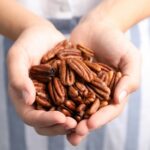Fermenting foods: it’s freaking me out!
Dear GreenSmoothieGirl: I really like the idea of adding the Rejuvelac as my green smoothie base, but I’m honestly totally freaked out to leave something perishable on my countertop in an unsealed container for several days. What are the chances that “bad bacteria” get in there and make me sick? I really appreciate any feedback you have. It sounds like a great opportunity to make green smoothies do even more for me, but I can’t get over the initial concept. –Grace
Answer: Grace, I think it might help if I explain the concept a bit more. Fermented foods are part of your diet already, if you eat yogurt or sauerkraut, or even beer. The manufacturer had to let it sit at room temperature for a time, to grow the cultures.
Also, before refrigeration, human beings had a stronger inner terrain and microbes rarely harmed them. Of course, now we have antibiotics that have seriously damaged most people’s balance of beneficial microorganisms colonizing the digestive tract. We also have refined foods weakening us, and few, if any, cultured foods strengthening us. We now seem to believe that killing a couple million of the billions of microscopic critters around us will somehow do the trick.
It’s a weird modern concept that everything we eat has to be sterilized—ancient peoples lived amongst billions of organisms very peacefully for thousands of years. So maybe our food is sterilized, fumigated, pasteurized, irradiated…..but there are billions of organisms everywhere ELSE (which makes the antibiotic wipes a pointless waste of money).
So, it feels unnatural to you but only because of our strange modern traditions, and the fact that we’ve gotten away from eating foods that nurture our gut’s need for healthy colonization. Just ONE course of antibiotics can change the gut’s internal terrain forever.
Every culture of the world eats cultured foods. Some chew up a food and spit it, with their saliva, into an earthen pot, and drink it a week later. (I won’t be teaching you those methods, don’t worry.) There are literally hundreds of types of cultured foods, in traditional / indigenous peoples, and in people who have not completely adopted processed diets.
The most complete and well known work on this concept is Sally Fallon’s Nourishing Traditions, which has some good info but advocates for lots of meat and dairy and a very rich diet. My 12 Steps to Whole Foods program deals with it in a condensed way in Ch. 8 and uses what I feel are a do-able, moderate amount of probiotic foods that do not require us to purchase $10/lb. animal parts. My work focuses on culturing vegetables, optionally some raw, antibiotic- and hormone-free milk, or coconut liquid. (I now culture my coconut liquid before using it in Hot Pink Breakfast Smoothie).
My blog on 9/15 talks about learning vicariously through others—the examples I gave were learning from others’ health disasters. But you can learn from my health victories, too. Does it help you to know that I have had a quart or a half gallon of raw kefir, or yogurt, or coconut kefir, or sprouts, or Rejuvelac, or sauerkraut, on my counter, pretty much every day of my life for the past 17 years? We have had zero instances of problems, illness, food poisoning.
It also helps if you understand the process of how food has historically been preserved. You can preserve foods a few ways. One, drying it to dramatically slow oxidation, which often involves lots of salt. Two, can it by killing all its lifeforce (enzymes and vitamins) so that there’s very little to oxidize, and then sealing it against air and bacteria. Third, utilizing lactobacillus and other beneficial organisms and lactic acid to break down the proteins and preserve the food (fermenting).
The way I make sauerkraut (see Ch. 8 of 12 Steps) is that the unrefined salt preserves it for a few days while the (slower) lactic acid begins to take over. I have two-year old raw sauerkraut (that I preserved with whey from my yogurt/kefir) that has been unsealed (but covered tightly with a lid) that we are still eating. It’s too soft, and it’s better, texture-wise, at six months old. But it’s preserved, and the healthy bacteria help my family stay healthy.
It might help to address the semantics. The word “fermented” has a negative connotation. (Although beer drinkers who wouldn’t be caught dead eating fermented vegetables drink PLENTY of fermentation.) When you think of fermented, do you think of ROTTEN? We aren’t eating any rotten foods at my house. We could mentally replace that word with a much nicer one: cultured!
So, don’t eat fermented foods. Eat cultured ones!
If “bad” bacteria gets into your cultured foods and makes them “go bad,” you will know. They will taste bad and/or mold. I have almost never had this happen. Once it happened with a bottle of sauerkraut. Never with kefir or Rejuvelac.
My Rejuvelac ferments in a day. At CHI, they told me 3-5 days, but mine tastes plenty tart 24 hours after I blend the sprouts and water, and put it on the counter to grow (aka ferment, aka culture).
Here’s my new video showing this easy, inexpensive habit that has the potential to see you through the winter without viruses or infections!
Posted in: 12 Steps To Whole Food, Videos, Whole Food













